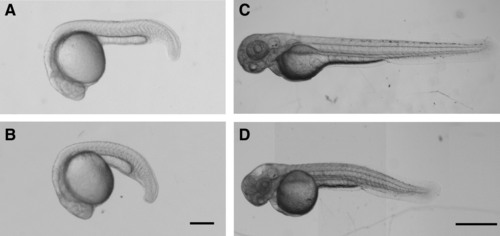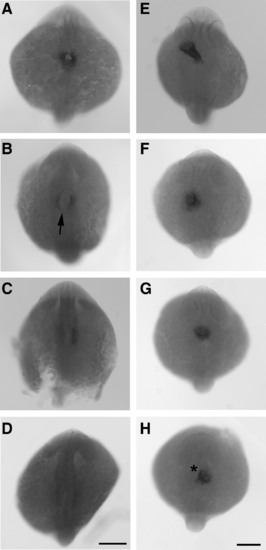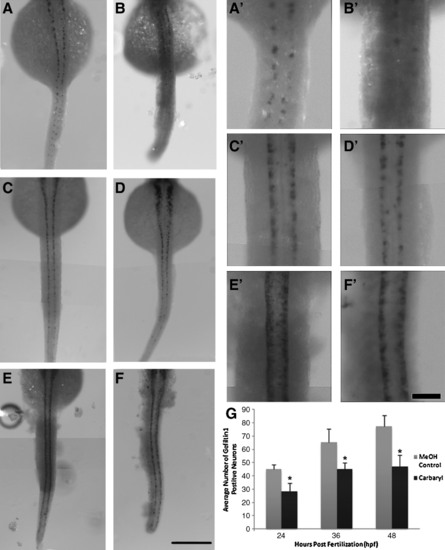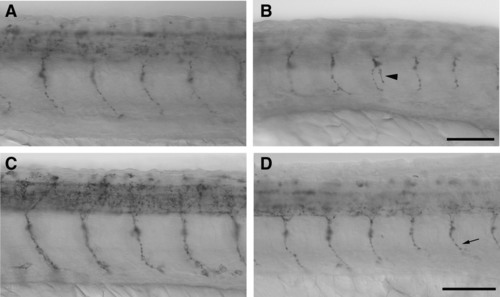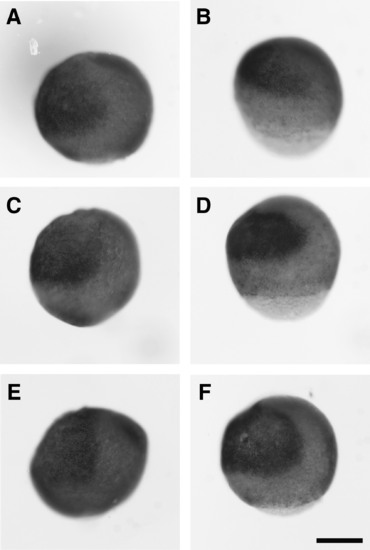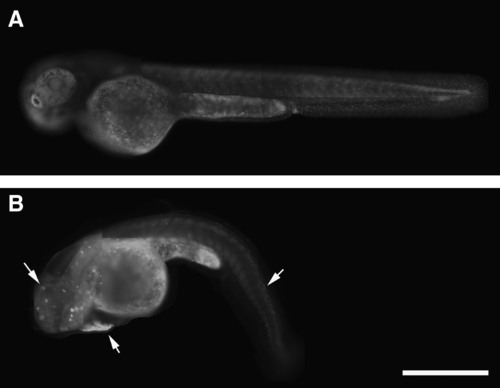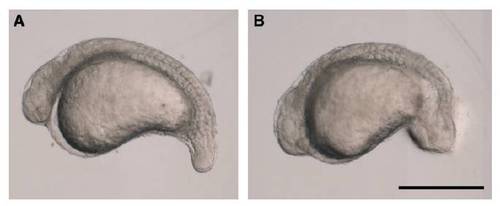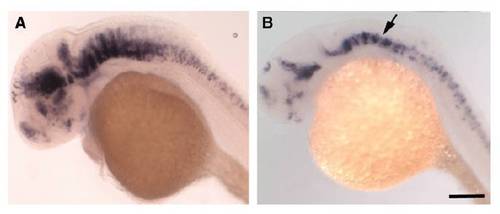- Title
-
The Effects of Carbaryl on the Development of Zebrafish (Danio rerio) Embryos
- Authors
- Schock, E.N., Ford, W.C., Midgley, K.J., Fader, J.G., Giavasis, M.N., and McWhorter, M.L.
- Source
- Full text @ Zebrafish
|
Carbaryl-treated embryos exhibit morphological defects. Lateral views of MeOH control embryos (A and C) and 20 μg/mL carbaryl-treated embryos (B and D). Embryos (C and D) have been treated with phenol thiouridine (PTU). (A and B) are 24 hpf, and (C and D) are 50 hpf. Different focal plane images were merged in Photoshop to produce complied images (C and D). Scale bars: (A and B) 120 μm; (C and D) 500 μm. |
|
Carbaryl-treated embryos have both a decrease in overall number of cardiac precursor cells and delay in cardiac precursor migration. Dorsal views of whole-mount RNA in situ hybridization for cardiac myosin light chain 2 (cmlc2) in MeOH control (A and E) and carbaryl-treated embryos (B–D, F–H) embryos at 20 hpf (A–D) and 30 hpf (E–H). Note the range of phenotypes in carbaryl-treated embryos from reduced endocardial tube fusion (B and C; arrow denotes reduced fusion) to almost complete absence of cmlc2 expression in cardiac field (D). Also note the range of later phenotypes in which ~10% of embryos have an endocardial tube that either has substantial delays in looping or fails to loop (F and G), or loops to the right side (* denotes looping to the right), instead of to the left (H). Scale bars: (A–D) 50 μm; (E–H) 75 μm. |
|
Carbaryl-treated embryos have a reduced number of gefiltin 1 positive neurons at 24, 36, and 48 hpf. Dorsal views of whole-mount RNA in situ hybridization using gefilitin 1 on MeOH control embryos (A, C, E; n=89, 31, 53, respectively) and carbaryl-treated embryos (B, D, F; n=30, 48, 31, respectively) at 24 hpf (A and B), 36 hpf (C and D), and 48 hpf (E and F). Individual neurons are labeled. Enlarged views of panels A–F are shown (A′–F′). Quantification of gefiltin 1 positive cells indicate a statistically significant (* indicates p<0.001) decrease in the number of neurons in carbaryl-treated embryos, where error bars indicate standard deviation (G). Different focal plane images were merged in Photoshop to produce complied images. Also images (A′–F′) were sharpened in Photoshop. Scale bars: (A–F) 250 μm; (A′–F′) 50 μm. |
|
Carbaryl-treated embryos exhibit errors in motor neuron pathfinding. Lateral views (A–D) of MeOH control (A and C) and carbaryl-treated embryos (B and D) whole-mount antibody-stained for the znp1 antibody showing motor axons at 26 hpf (A and B) and 32 hpf (C and D). The arrow indicates points of truncation and the arrowhead indicates excessive branching. Scale bar: (A and B) 25 μm; (C and D) 30 μm. |
|
Carbaryl-treated embryos do not have significant changes in levels of gata 3 expression during gastrulation. Lateral views of gata 3 RNA in situ hybridization on MeOH control (A, C, E) and carbaryl-treated (B, D, F) embryos at 9 hpf (A and B), 10 hpf (C and D), and 11 hpf (E and F). The ventral side is to the left. Overall, no global change in gata 3 expression is indicated; however, a slight delay in gastrulation is apparent (A and F). Images were brightened using Photoshop. Scale bar: 250 μm. |
|
Carbaryl-treated embryos experience an increase in cell death. Lateral views of MeOH control (A) and carbaryl-treated (B) embryos exposed to acridine orange at 48 hpf. Dying cells near the heart, in the head region, and along the spinal cord are apparent in carbaryl-treated embryos (B; arrows), and far exceed the amount of dying cells observed in MeOH control embryos. Different focal plane images were merged in Photoshop to produce complied images. Scale bar: 500 μm. |
|
40 μg/mL carbaryl-treated embryos exhibit severe morphological defects. Lateral views of 40 μg/mL carbaryl-treated embryos at 24 hpf (A and B). Development of these embryos is severely delayed/compromised and many morphological defects are present, such as elongated yolk and truncated tails. Embryos have been treated with PTU, and different focal plane images were merged in Photoshop to produce compiled images. Scale bar: 500 μm. |
|
Carbaryl-treated embryos have a decrease in gefiltin 1 positive neurons in the brain region. Lateral views of whole-mount RNA in situ hybridization using gefilitin 1 on MeOH control (A) and carbaryl-treated (B) embryos at 36 hpf. Arrow indicates reduced expression of gefiltin 1 positive neurons in the hindbrain regions of the embryo. Scale bar: 75 μm. |

